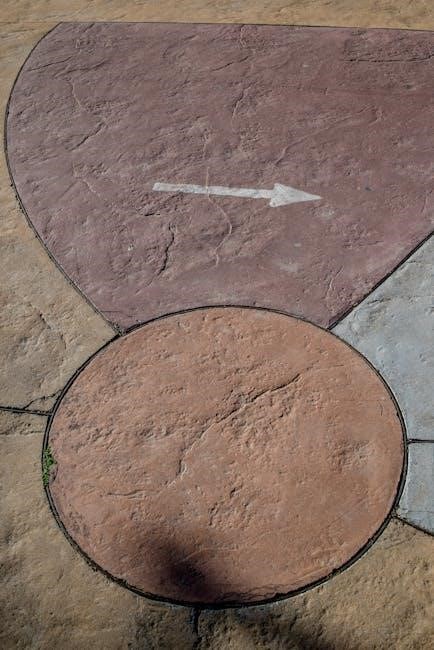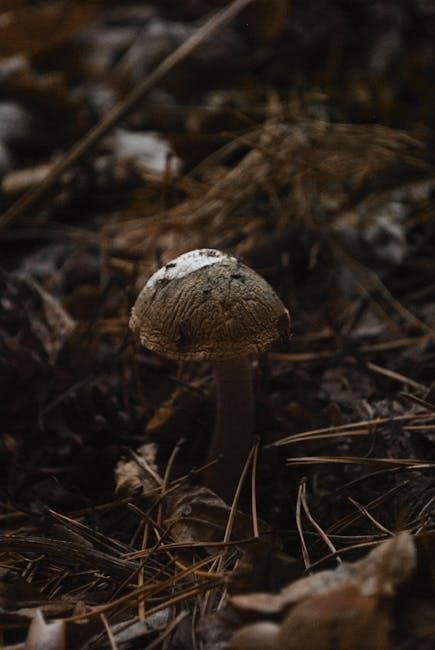Iowa mushroom guide provides information on various species, including morels and puffballs, found throughout the state, with resources and tips for safe foraging and identification, using online guides and local expertise always․
Overview of Mushroom Species in Iowa
Mushroom species in Iowa are diverse and abundant, with various types found throughout the state, including morels, puffballs, and oyster mushrooms․ The state’s geography and climate support a wide range of mushroom growth, from the prairies to the woodlands․ Some species, like the morel, are highly prized for their unique flavor and texture, while others, like the puffball, are valued for their medicinal properties․ Iowa’s mushroom species can be found in a variety of habitats, including forests, fields, and wetlands, and can thrive in different environments, from sunny to shady areas․ The variety of species found in Iowa makes it an exciting place for mushroom enthusiasts, with new species to discover and learn about, and with proper identification and precautions, mushroom foraging can be a fun and rewarding experience․ Iowa’s rich fungal diversity is a treasure to explore and appreciate․

Dangerous Mushrooms in Iowa
Some Iowa mushrooms are poisonous, including lookalikes of edible species, requiring caution and expertise for safe identification and handling always and carefully․
Identification of Verpa Species
The Verpa species can be identified by their wrinkly cap and similar stem to morel mushrooms, but they have a distinctive cottony pith in the middle of their stem, whereas morel stems are always hollow․ This characteristic is crucial for distinguishing between the two species․ When in doubt, it is essential to exercise caution and avoid consuming the mushroom․ The Verpa species can be found in Iowa, and their resemblance to morel mushrooms makes them a potential threat to foragers․ Proper identification skills and knowledge of the characteristics of the Verpa species are necessary to avoid mistaken identity․ By studying the features of the Verpa species, mushroom enthusiasts can improve their identification skills and enjoy a safer foraging experience․ Additionally, consulting with experts and using field guides can provide valuable information for identifying the Verpa species and other wild mushrooms․

Mushroom Identification Guides
Mushroom guides, such as Mushrooms in Your Pocket, provide valuable resources for identifying species in Iowa, with detailed descriptions and images for accurate identification always available online․
Resources for Mushroom Identification in Iowa
There are various resources available for mushroom identification in Iowa, including online guides and field manuals․ The Iowa State University website offers a free downloadable guide to mushroom foraging, which includes information on safe foraging practices and how to identify different species․ Additionally, local mushroom hunting clubs and organizations often provide resources and expertise for identifying mushrooms found in the state․ Some popular field guides, such as Mushrooms in Your Pocket, are also available for purchase and provide detailed descriptions and images of various mushroom species․ These resources can be found online or through local bookstores and outdoor gear shops․ By utilizing these resources, individuals can gain a better understanding of the different mushroom species found in Iowa and learn how to identify them safely and accurately, which is essential for a successful and enjoyable foraging experience in the state’s natural areas․

Seasonal Mushroom Foraging in Iowa
Seasonal foraging in Iowa occurs during spring, summer, and fall, with various species emerging during each season, offering opportunities for exploration and discovery of wild mushrooms always available․
Calendars for Mushroom Foraging in Iowa
Mushroom foraging calendars are essential tools for enthusiasts in Iowa, providing a schedule of when various species are likely to emerge․ These calendars take into account factors such as weather, temperature, and precipitation, which affect the growth and availability of wild mushrooms․ By consulting a calendar, foragers can plan their searches and increase their chances of finding specific species․ Online resources and local guides often provide calendars tailored to Iowa’s climate and regions․ Some calendars also include information on the best locations for foraging, such as state parks, forests, and nature reserves․ Additionally, calendars may offer tips on how to identify and prepare different species, as well as safety precautions to take while foraging․ Overall, a calendar is a valuable resource for anyone interested in mushroom foraging in Iowa, helping to make the experience more enjoyable and successful․ Mushroom foraging calendars are widely available online․

Mushroom Foraging Safety and Precautions
Foragers must exercise caution and develop proper identification skills to avoid toxic species always using online guides and local expertise for safe mushroom foraging in Iowa naturally․
Importance of Proper Identification and Caution
Proper identification is crucial when foraging for mushrooms in Iowa, as some species can be toxic and pose serious health risks․ The importance of caution cannot be overstated, as incorrect identification can have severe consequences․ Online guides and local expertise can provide valuable resources for learning about mushroom identification and safety․ It is essential to develop proper identification skills and to exercise caution when handling unknown mushroom species․ By taking the necessary precautions and being mindful of the potential risks, mushroom foragers can enjoy a safe and rewarding experience in Iowa’s natural areas․ The key to safe mushroom foraging is a combination of knowledge, caution, and respect for the natural environment, and by following these principles, foragers can minimize the risks associated with mushroom collection and maximize the benefits of this enjoyable hobby, always using available resources and expertise․